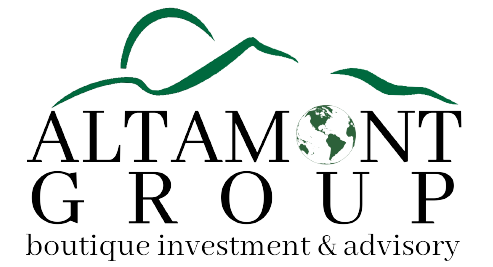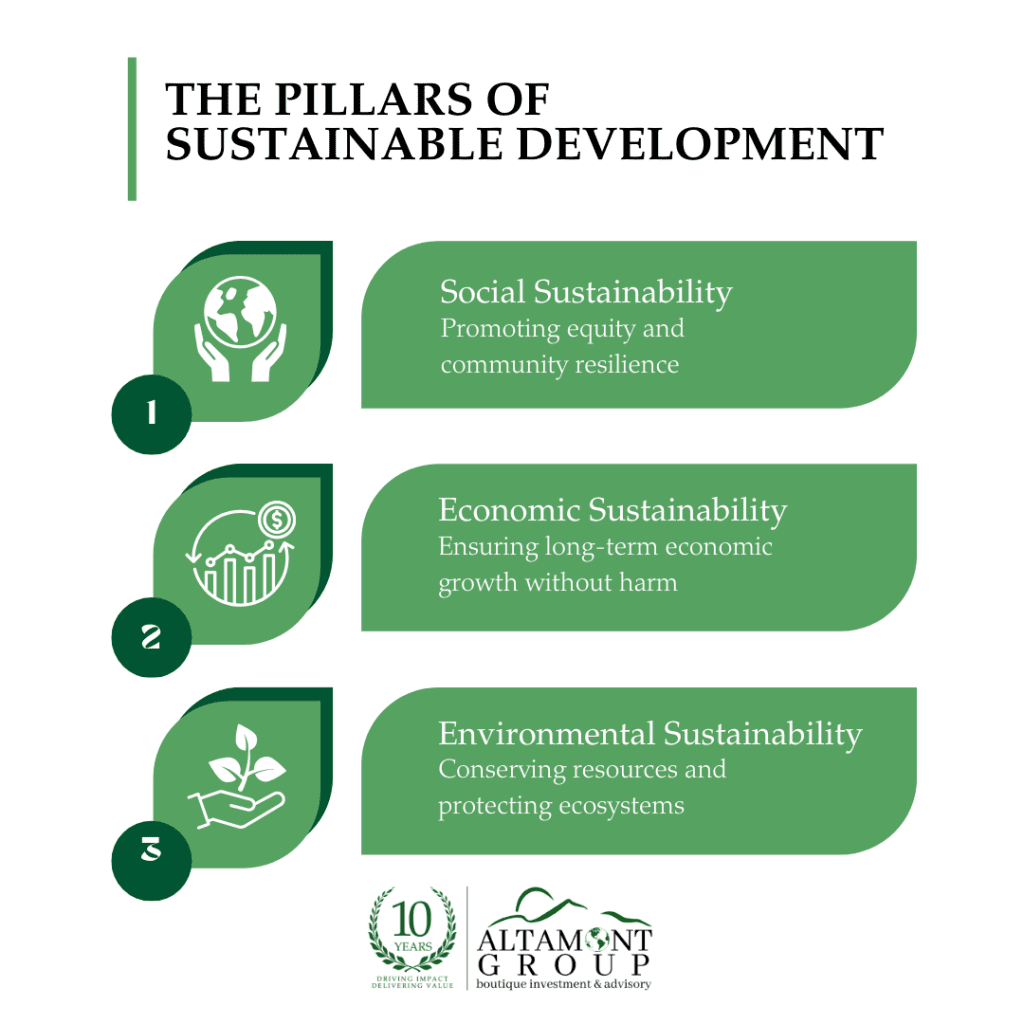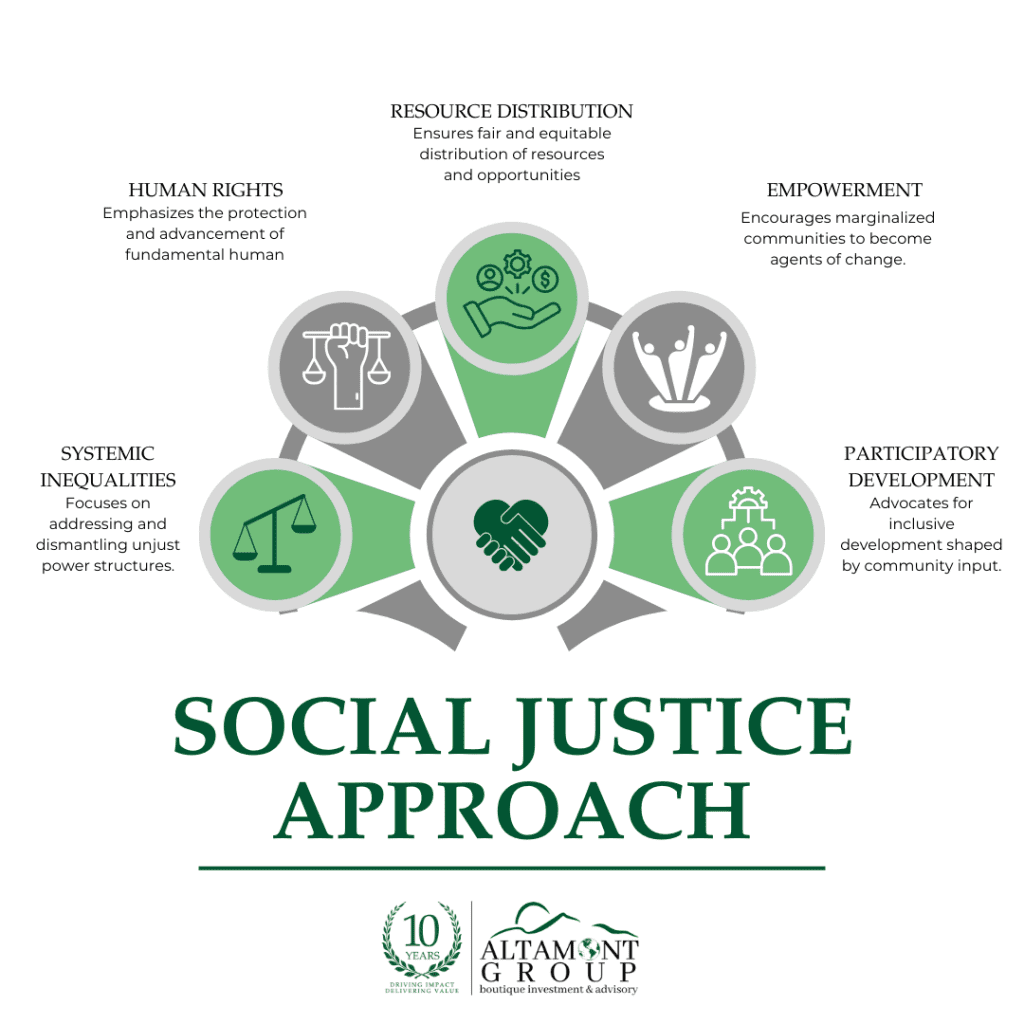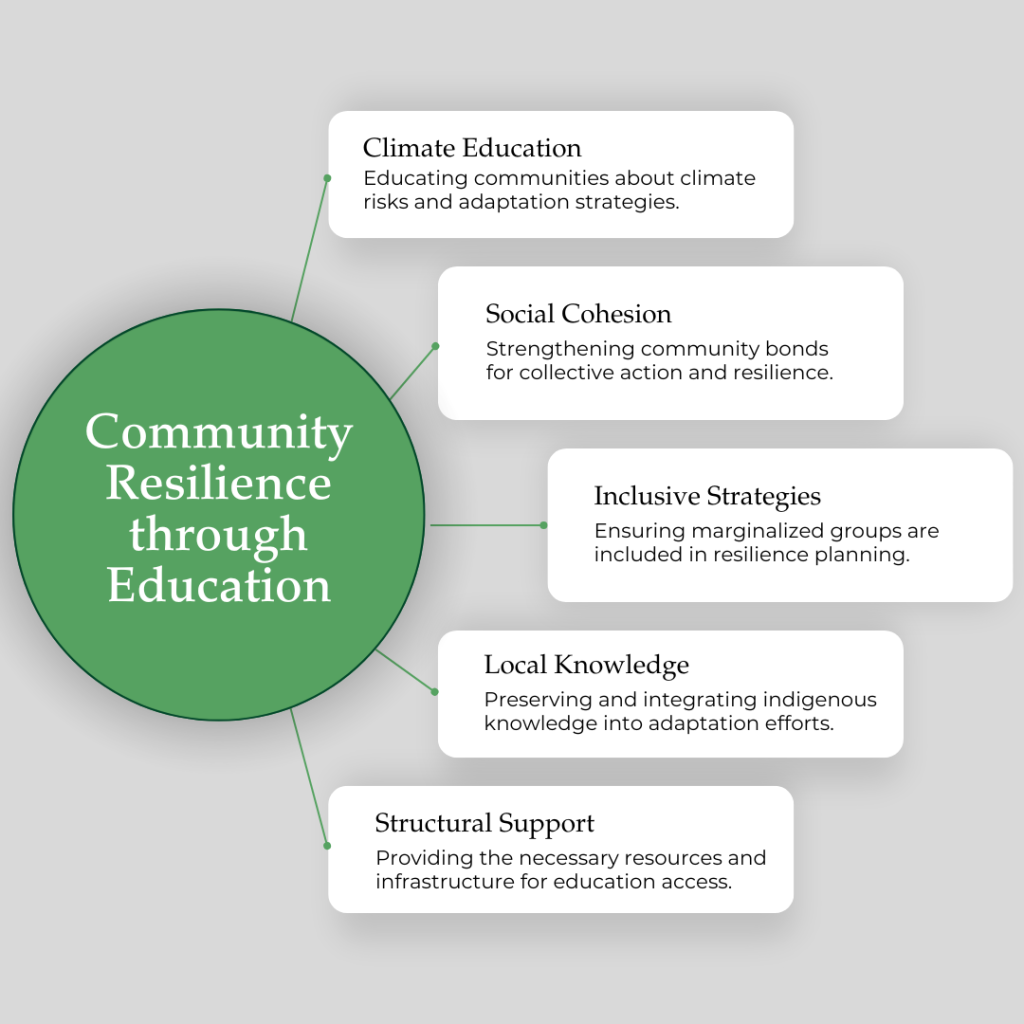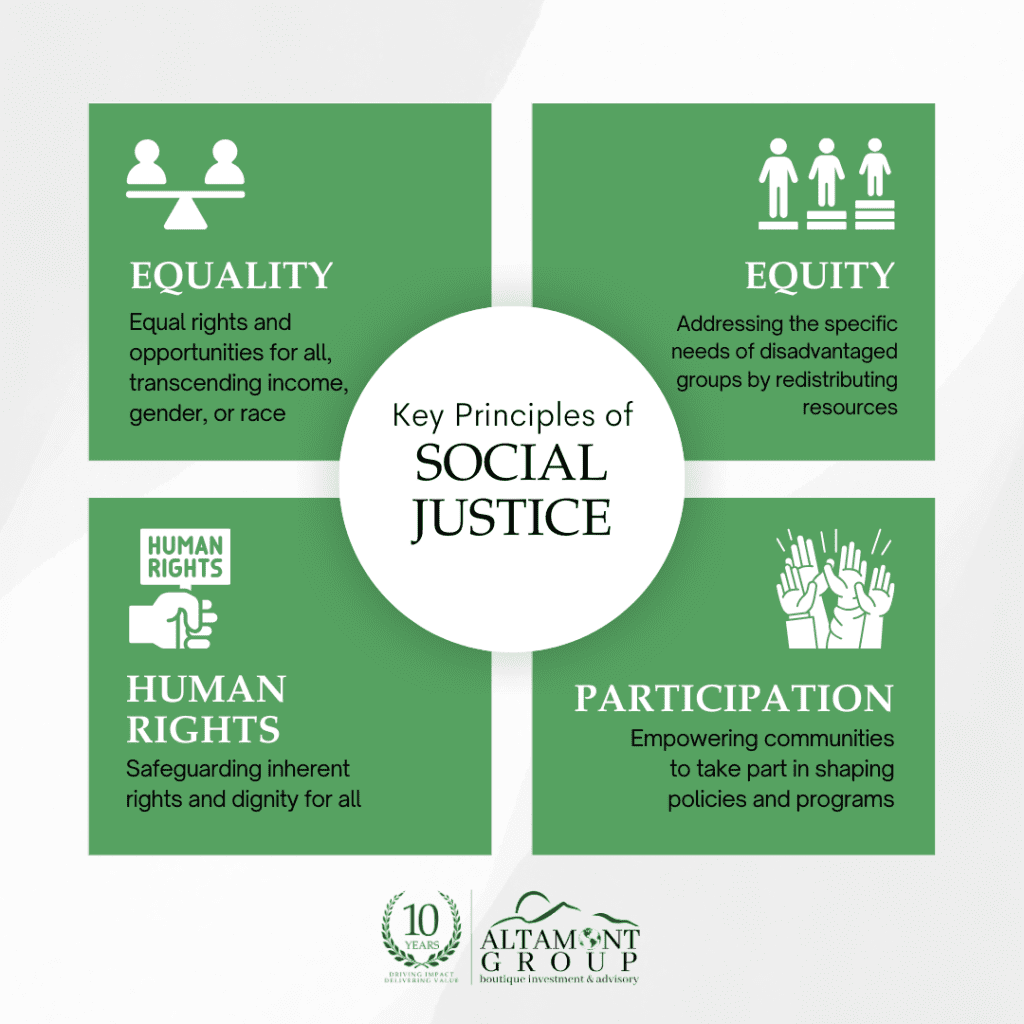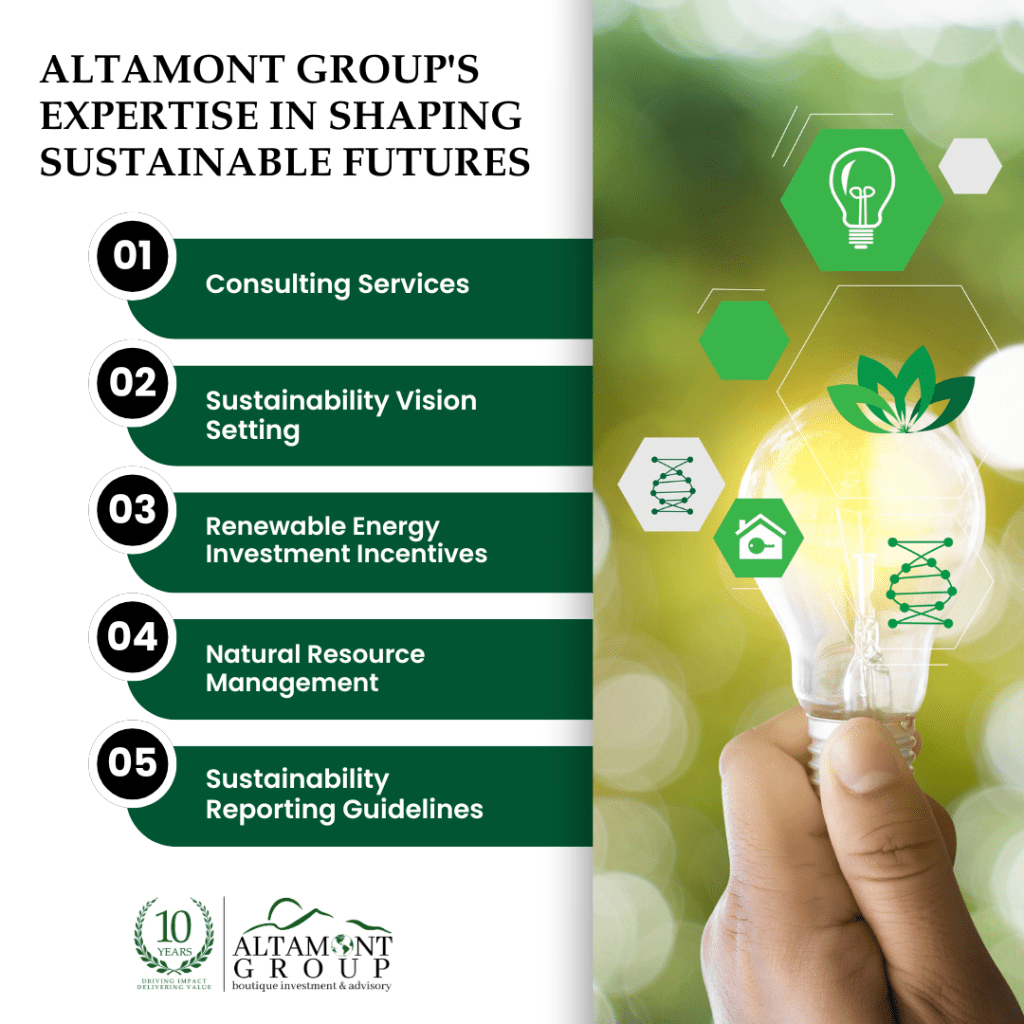Why Sustainability is the Cornerstone of Development Projects
Introduction In an era where global challenges such as climate change, resource depletion, and social inequality are at the forefront of public discourse, sustainability has emerged as a pivotal concept in development projects. It is no longer sufficient to pursue economic growth and infrastructural development without considering their long-term impacts on the environment, society, and future generations. This blog post delves into the essence of sustainability, best practices, evaluation methods, and highlights successful sustainable projects in the Global South. Additionally, it showcases Altamont Group’s approach to integrating sustainability into their projects and advisory services. What is Sustainability? Sustainability, in the context of development, refers to the practice of meeting the needs of the present without compromising the ability of future generations to meet their own needs. It encompasses three main pillars: Best Practices Implementing sustainability in development projects involves several best practices: Evaluating Sustainability in Development Projects Evaluation of sustainability in development projects is crucial to ensure that they meet their intended goals without adverse long-term impacts. Various Monitoring and Evaluation (M&E) frameworks can be employed: Examples of Successful Sustainable Projects in the Global South Why Projects That Don’t Consider Long-Term Sustainability Fail Projects that do not incorporate long-term sustainability often face significant challenges and can even exacerbate existing problems. Here are some reasons why such projects fail: A project that failed to consider sustainability can be seen in the Aral Sea Disaster. In this case, the diversion of rivers for irrigation in the former Soviet Union led to the near disappearance of the Aral Sea, causing ecological catastrophe, loss of fisheries, and severe public health issues due to toxic dust from the dry seabed. Another example of such a project can be seen in the Mega-Dams in the Amazon. Projects like the Belo Monte Dam in Brazil have caused extensive environmental damage, displaced indigenous communities, and led to loss of biodiversity, illustrating the negative impacts of not considering environmental and social sustainability. Altamont Group’s Commitment to Sustainability Altamont Group, a women-owned advisory and investment entity, provides bespoke, sustainable solutions that maximize impact and ensure long-term success for clients across emerging and developed economies. Our approach is built on a foundation of sound business principles and DEAR values—Dedicated, Engaged, Entrepreneurial, Ethical, Agile, and Responsive. Altamont Group has a proven track record in enhancing sustainability across various sectors. In the educational sector, we have integrated sustainability into school curricula, promoted eco-friendly school infrastructures, and trained educators on sustainable practices. Our efforts in developing eco-friendly schools have reduced energy consumption and fostered environmental awareness among students. In smart city development, our projects prioritize sustainability through green technologies, efficient waste management, and sustainable urban planning. For instance, our implementation of smart city projects that incorporate renewable energy sources, smart grids, and sustainable public transport systems has significantly improved urban living standards while minimizing environmental impact. In the humanitarian and development sector, we focus on ensuring the sustainability of initiatives by incorporating ESG (Environmental, Social, Governance) responsibility, optimizing value at every step, and addressing contextual challenges. Our projects in areas such as water management and agriculture have promoted sustainable practices that enhance food security and resource conservation. At Altamont Group, we are committed to delivering effective and sustainable solutions tailored to the unique needs of our clients. Our multidisciplinary approach and extensive experience across various sectors enable us to create impactful and long-lasting results. Reach out to us today to learn how we can help you achieve your development goals sustainably.
Why Sustainability is the Cornerstone of Development Projects Read More »
